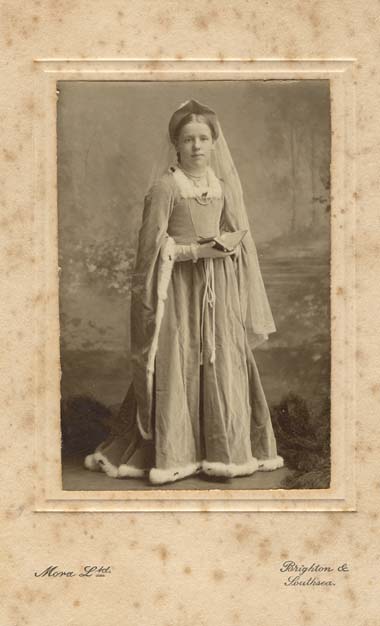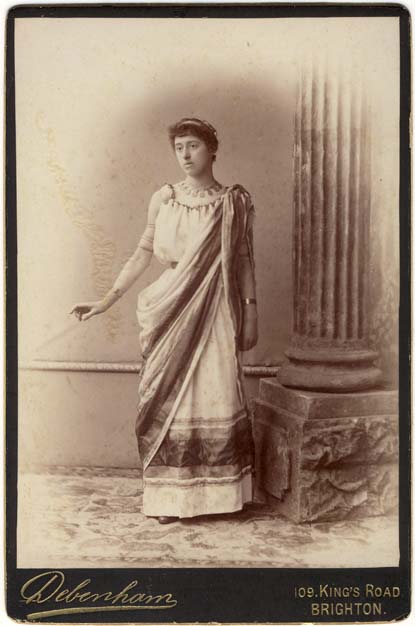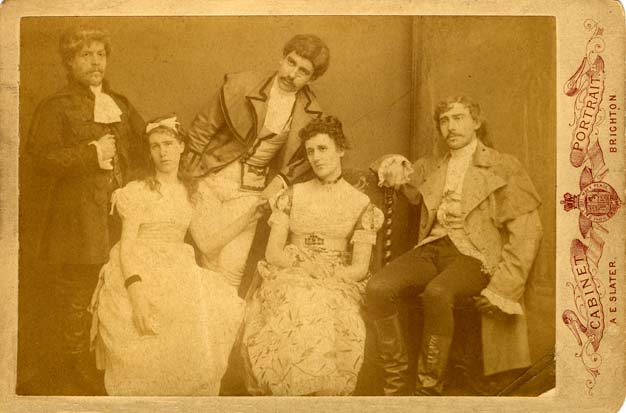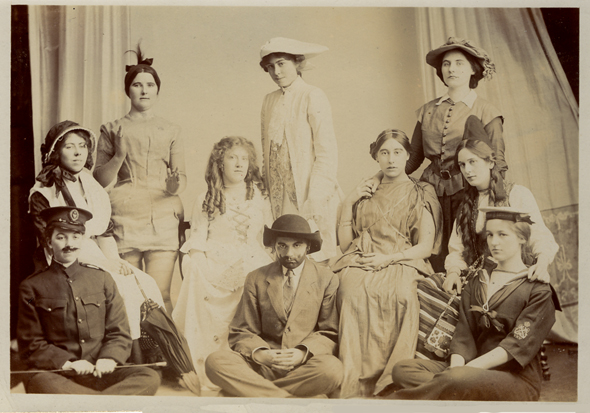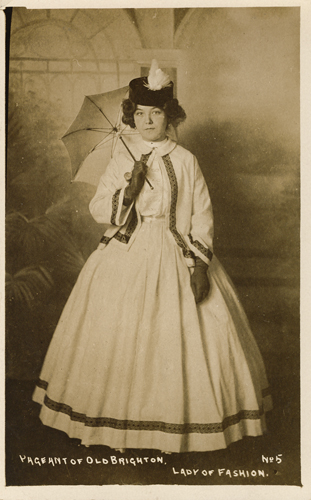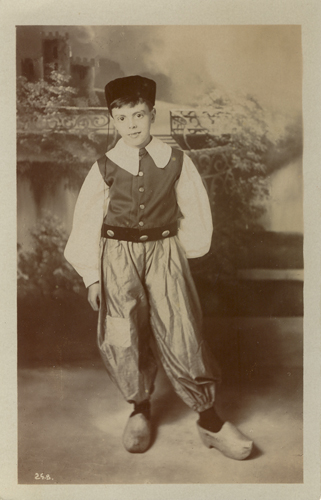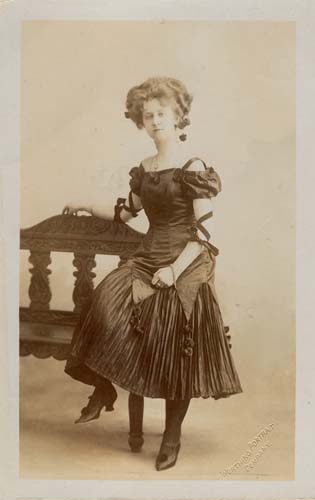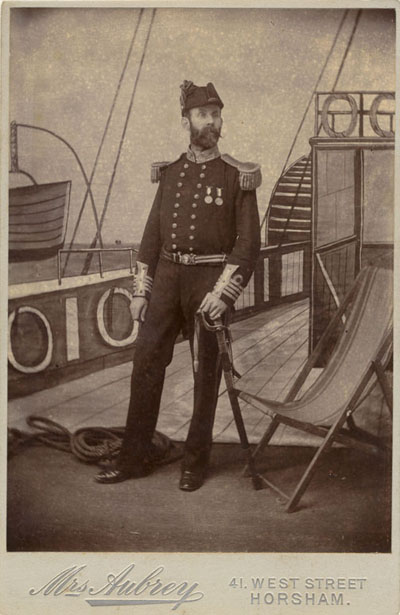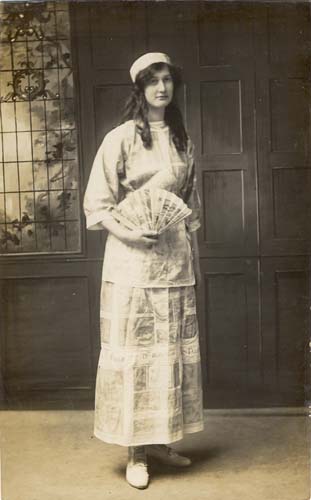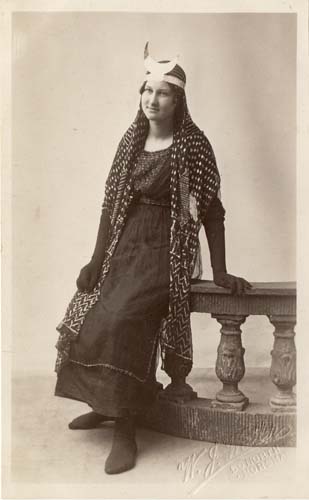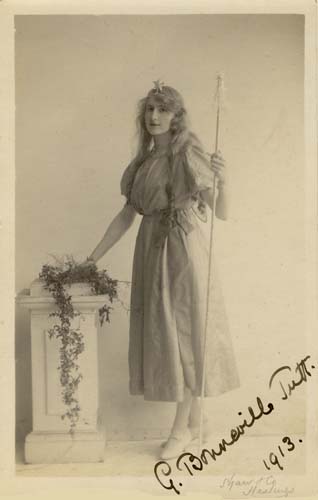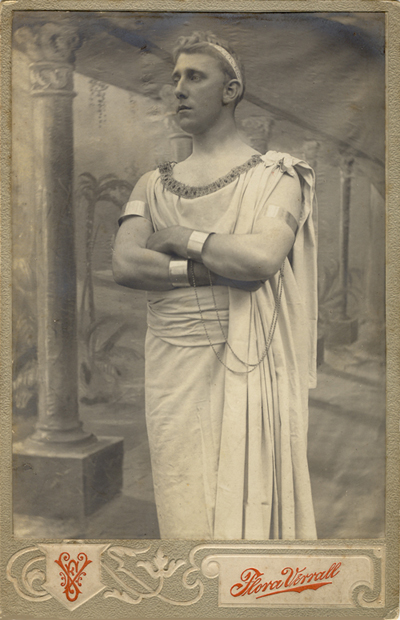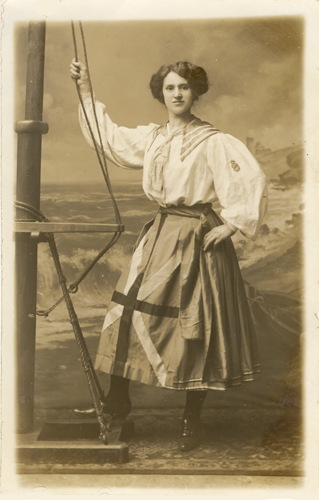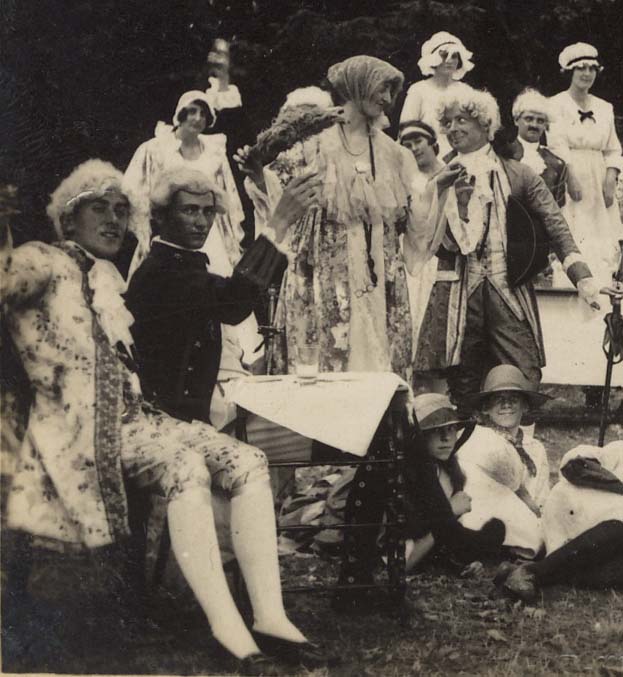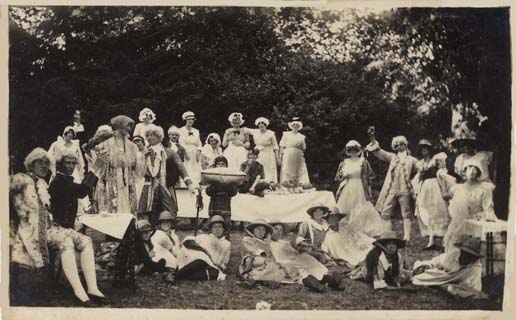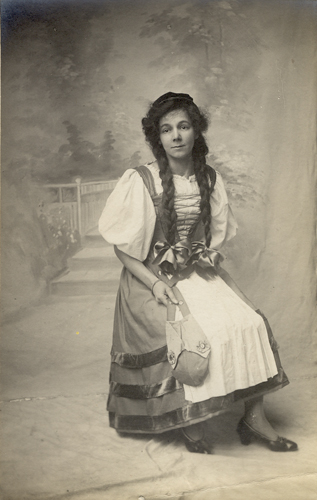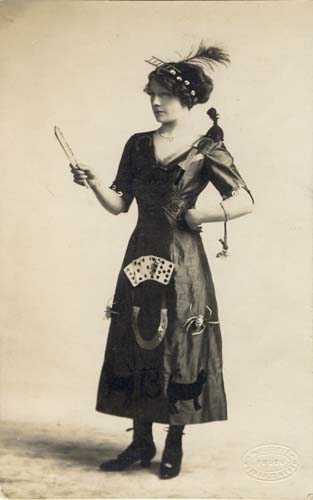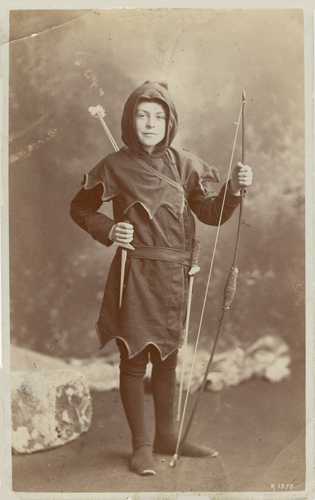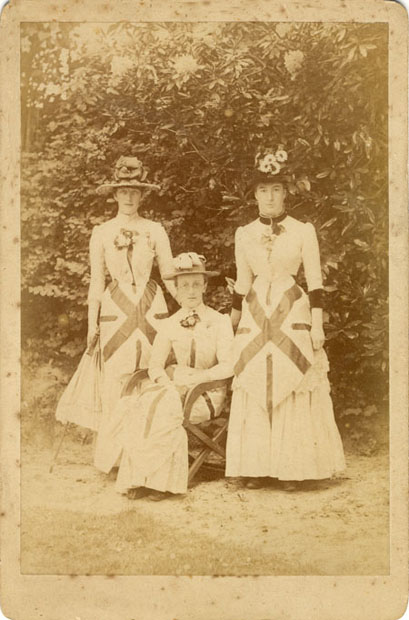Fancy Dress Photographs by Sussex Photographers
| During
Victorian and Edwardian times, it was not uncommon for people to be
photographed in historic or fancy costume. A number of professional
photographers supplied historical costumes for their sitters to create
a novelty portrait. Party-goers on their way to a "Fancy Dress Ball"
had the opportunity to pose for their photographic portrait at a High
Street studio wearing the costumes they had hired or created
themselves for this special occasion. When electric lighting was first installed in photographic studios during the late 1880s, the main benefit was that portraits could be taken in the evening, so that people on their way to parties and dances could be photographed in their finery. When Mayall & Co. advertised their Electric Light Studio at 90-91 King's Road, Brighton in June 1887, they were keen to point out to their customers that portraits were "taken at all times by ELECTRIC LIGHT", but, after 6pm, by appointment only. Mayall & Co. believed this would be "especially convenient for ladies en route to BALLS and DINNER PARTIES". Some studios in Sussex supplied fancy dress or historical costumes for their cutomers' use during photographic sessions. In 1903, Edward G. Carver, "Artist & High Art Photographer" of 50 King's Road, St Leonards-on-Sea, provided special "backgrounds" (painted backcloths) and "costumes", making "Dressing Rooms" available for customers. The "backgrounds suitable to the Subject, Costume, &c. producing pleasing works of art instead of the commonplace". (In my own collection of Victorian and Edwardian photographs I have studio pictures of men in Roman togas, men and women in fake naval uniforms and Victorian couples wearing 18th century costume, complete with powdered wigs). "Fancy Dress" balls were particularly popular during the Victorian and Edwardian period. From the 1880s up until after the First World War, local newspapers would publish reports on fancy dress balls and costume parties. Accounts in local newspapers would often give details of the costumes worn and list the names of the guests who won prizes for their party costumes. For example, in 1910, one newspaper listed the prize winners and notable costumes on show at a recently held Fancy Dress Ball (e.g. Miss Dunn - "Italian Girl", Miss Blair - "Gipsy Queen", Miss Robertson -"Tambourine Girl", Mrs Shells as "Britannia", Miss MacGregor - Spanish Dancer"). National or regional costumes from Continental Europe (e.g. Italian, Swiss, Tyrolean) were particularly popular choices for "Fancy Dress". Fancy Dress costumes could be hired for the occasion, but many enterprising young women made their own costumes. It seems likely that the three young women posing for their portrait in traditional folk costume at Mrs Bristow's studio in Worthing (see the Worthing panel below), supplied their own costume. (Florence Jupp, one of the Jupp sisters of Worthing, was a dressmaker by trade). After spending hours making a costume for a Fancy Dress Ball it would seem sensible to preserve a memory of the hand-made garment and create a memento of the special occasion by commissioning a portrait from a local professional photographer. |
[ABOVE] A studio portrait of a young woman wearing traditional Scottish costume, photographed at one of the branch studios of Van Trolga (c1912). Ernest Van Trolga operated photographic studios in Brighton between 1910 and 1915. Van Trolga had branch studios in London at Clapham Junction and Putney and in Southampton. |
|
BRIGHTON |

